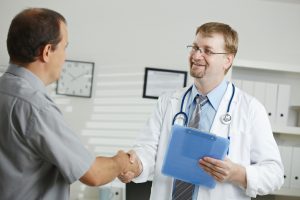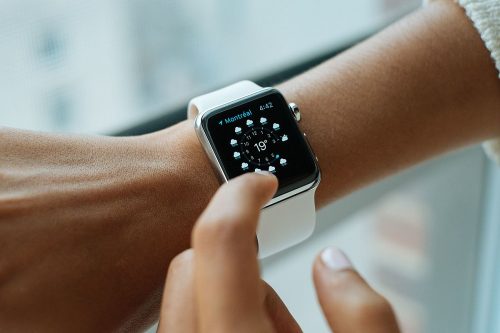Diagnosing illnesses in their beginning stages is difficult — warning signs are usually shrugged off and attributed to simple reasons like working late or sleeping poorly. Consequently, diseases may worsen until their symptoms can no longer be ignored or until it is too late. By then, nothing can be done about the disease’s onset, and the risk of spreading a contagious disease often increases.
As recently reported in PLOS Biology, a team of Stanford researchers led by Professor and Chair of Genetics Michael Snyder is working to take the guesswork out of disease diagnosis. Using data from wearable biosensors like smartwatches or other health trackers, they could accurately determine when users were getting sick — even before symptoms developed — by detecting subtle changes in a few key physiological measurements. Remarkably, they were also able to flag the early warning signs of complex diseases such as Lyme disease and type 2 diabetes.
In the last few years, wearable biosensors have become more popular and reliable at recording physiological measurements. The popularization of wearables inspired the Stanford team to take advantage of this source of medical data and test its diagnostic capabilities. Although physicians use many such devices already for health-monitoring purposes, such as tracking physical activity or sleeping patterns, few have considered using them for preventative medicine.
The Stanford team monitored changes in heart rate, blood oxygen level, and skin temperature. When people are healthy, these measurements are stable, allowing the team’s algorithm to establish a baseline for comparison. When people get sick, the algorithm can then correlate deviations from the baseline with the onsets of diseases. For example, for many illnesses associated with inflammation — such as common colds or even Lyme disease, heart rate and skin temperature tend to increase while blood oxygen tends to decrease. Alternatively, patterned variations in heart rate can also indicate signs of insulin resistance, which is a key risk factor for type 2 diabetes.
The main advantage of their algorithm lies in its extensive customization tailored to each user. “The key is that it’s all personalized. Everybody has a different ba

seline skin temperature or heart rate, and so we’re trying to find deviations from those personalized baselines,” Snyder said. Even though everyone’s bodies respond to illnesses differently, the algorithm can set thresholds for detecting diseases on a user-by-user basis depending on each individual’s unique physiology.
While promising, the project is still in its preliminary stages. One main limitation of the study is its relatively small scale; the Stanford team used only one type of wearable biosensor, so future research will need to include a variety of the wearables now available on the market. In addition, since their initial study only tracked forty-three participants, the researchers plan to increase the number of test subjects to ensure that their algorithm works on a large population. On the logistical side, the team also needs to meet important regulations set by the FDA, which ensure that the tool operates properly, before the algorithm can be released for public use.
Perhaps the biggest obstacle, however, will be convincing the public to adopt and use the new technology. Bobak Mortazavi, an Instructor in Cardiology and researcher at the Yale School of Medicine, also studies wearable biosensors. “A real issue going forward is going to be alarm fatigue. After too many false positives, people are going to get annoyed, start tuning out the alarms, and stop wearing the devices,” Mortazavi said. He also highlighted concerns about data ownership and the legalities of how the data will be used. “There are a lot of issues that still need to be fleshed out. The realistic usability side of this technology hasn’t really happened yet,” Mortazavi added.
Once perfected, this system could significantly shift our current approach to disease prevention and treatment. Early diagnosis can streamline medical procedures, while an increase in medical data can help physicians make decisions that are more accurate. Physicians are currently limited to the use of data collected during patients’ periodic visits to the doctor’s office, so having months of long-term, uninterrupted data may help them recognize trends that would be otherwise be impossible to track.
Snyder likens wearable biosensors to sensors on cars. “You have a car with hundreds of sensors monitoring its health, so you wouldn’t even think about driving around without those sensors,” Synder said. “Yet, the average person has zero sensors and goes around without anything monitoring their health.” One day, with the help of wearables, figuring out if we are sick might be as simple as checking the engine light on our car dashboards.

